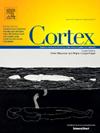火花随距离而消退:电场分布对使用不同te技术的全局运动感知的影响
IF 3.3
2区 心理学
Q1 BEHAVIORAL SCIENCES
引用次数: 0
摘要
先前的证据表明,高频经颅随机噪声刺激(hf-tRNS)在使用头侧蒙太奇(即在Cz上返回电极)时降低了运动相干阈值。脑外蒙太奇,避免刺激回电极下的区域,也被用来调节行为表现。在这项研究中,我们研究了不同的经颅电刺激(tES)方案对视觉运动识别的影响,将返回电极放置在同侧手臂上。我们使用hf-tRNS、阳极、阴极经颅直流电刺激(tDCS)和假性刺激对hMT+(一个涉及全局运动感知的大脑区域)进行电极定位评估。采用随机点运动图(RDKs)测量运动方向判别。考虑到这个蒙太奇中刺激电极和返回电极之间的距离增加,我们预计与之前的研究相比,运动识别阈值的降低幅度较小。我们的研究结果表明,增加电极间的距离会改变目标电极下皮层区域内电流的流动特性,如电流分布和聚焦,从而产生不同的效果。此外,测试的其他tES方案没有观察到显著的效果。我们的研究结果表明,电极间距离的变化会影响目标电极下皮层区域内电流的分布和聚焦等电流特性,从而导致不同的神经调节作用。这些结果强调了刺激配置对性能的重要性,特别是由于电极间距离的变化而导致的电位电场偏移。鉴于脑刺激技术在临床和认知研究中的广泛应用,我们的结果可以指导未来的研究仔细考虑刺激蒙太奇配置的这一进一步方面。本文章由计算机程序翻译,如有差异,请以英文原文为准。
Sparks fade with distance: The effect of electric field distribution on global motion perception using different tES techniques
Previous evidence has shown that high-frequency transcranial random noise stimulation (hf-tRNS) reduces motion coherence thresholds when applied with a cephalic montage (i.e., return electrode over Cz). Extracephalic montages, which avoid stimulating regions under the return electrode, have also been used to modulate behavioral performance. In this study, we investigated the effects of different transcranial electrical stimulation (tES) protocols on visual motion discrimination, placing the return electrode on the ipsilateral arm. We assessed the impact of electrode positioning using hf-tRNS, anodal, cathodal transcranial direct current stimulation (tDCS), and Sham stimulation over hMT+, a brain region involved in global motion perception. Motion direction discrimination was measured using random dot kinematograms (RDKs). Given the increased distance between the stimulation and return electrodes in this montage, we expected a smaller reduction in motion discrimination thresholds compared to our previous study. Our results suggest that increasing interelectrode distance alters current flow characteristics - such as current distribution and focality - within the cortical areas under the target electrode, producing different effects. Additionally, no significant effects were observed with the other tES protocols tested. Our findings suggest that change in the interelectrode distance influences current flow characteristics, such as current distribution and focality, within the cortical areas under the target electrode, resulting in differential neuromodulatory effects. These results highlight the importance of stimulation configuration on performance, particularly a potential electric field shift due to the change in the interelectrode distance. Given the widespread application of brain stimulation techniques in clinical and cognitive research, our results can guide future studies carefully considering this further aspect of stimulation montage configurations.
求助全文
通过发布文献求助,成功后即可免费获取论文全文。
去求助
来源期刊

Cortex
医学-行为科学
CiteScore
7.00
自引率
5.60%
发文量
250
审稿时长
74 days
期刊介绍:
CORTEX is an international journal devoted to the study of cognition and of the relationship between the nervous system and mental processes, particularly as these are reflected in the behaviour of patients with acquired brain lesions, normal volunteers, children with typical and atypical development, and in the activation of brain regions and systems as recorded by functional neuroimaging techniques. It was founded in 1964 by Ennio De Renzi.
 求助内容:
求助内容: 应助结果提醒方式:
应助结果提醒方式:


